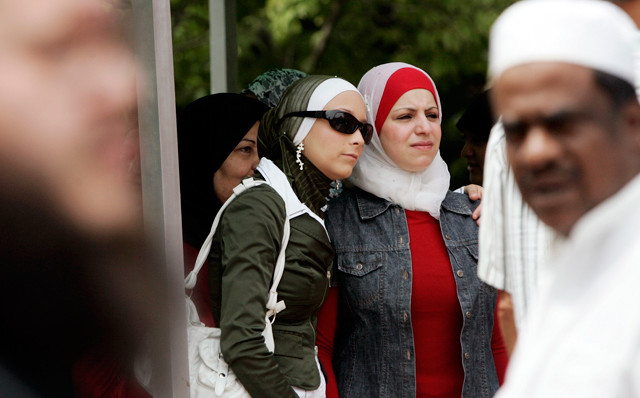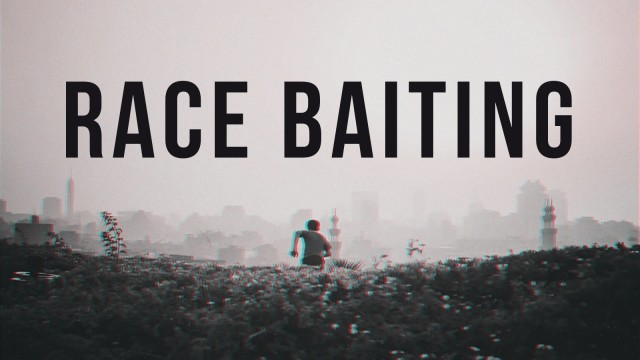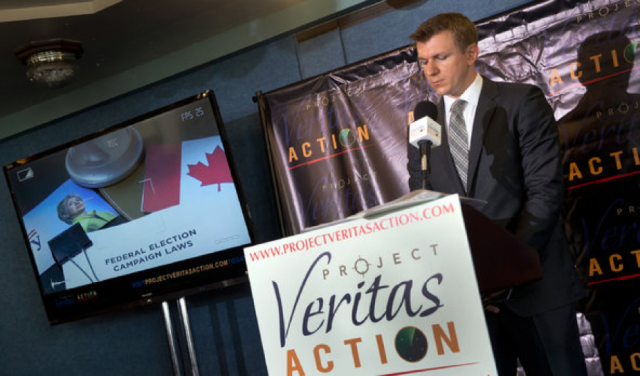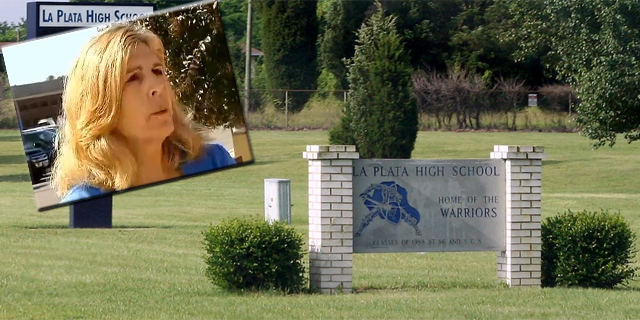Muslim Indoctrination and the U.S. Department of Education from Hihab Dress-Up to Convert
The World Hijab Day website presents hijab-wearing as a sign of empowerment; women and girls who wear hijabs are called “queens, princesses, and sultanas.” One blog post by Megan Baase, however, reveals that experimental hijab-wearing may have other effects. Baase writes that she didn’t know much about Islam until World Hijab Day. After reading about Islam and “why women wear hijabs,” she decided to convert: “I would’ve never learned about Islam if it weren’t for world hijab day.”Now, the U.S. Department of Education is encouraging Islamic proselytizing.
Ever since 9/11 educators have been trying to promote a positive view of Islam under the pretext of fighting harassment of Muslims. American textbooks repeat Muslim doctrine as if it were historical fact, students are taken to pray in mosques, and girls are asked to dress up in hijabs, the Muslim head scarves.
When I taught at Georgia Perimeter College (2007-2010) I’d see posters on bulletin boards put up by a Muslim professor who advised the Muslim Student Association (a “legacy project” of the Muslim Brotherhood), inviting girls to “wear a hijab for a day.” In 2009, at the annual meeting of the National Council for the Social Studies, I reported on such panels as “Muslim Perspectives Through Film and Dialogue.”
Now we have a World Hijab Day on February 1. The first one was held in 2013. The organization’s website reported that that February, “Girls of all faiths across East Lancashire [United Kingdom] have been taking part in World Hijab Day to understand and appreciate the muslim [sic] culture.” At Pleckgate High School, the head of “RE and citizenship,” was quoted as saying, “Staff and pupils, Muslim and non Muslim, wore the hijab all day as a way of increasing understanding. . . .”
Here in the USA, in Texas, later that month, WND reported, “Students Made to Wear Burqas – in Texas.” The exercise was part of the Texas CSCOPE curriculum. In California, at Natomas Pacific Prep public charter school, some girls wore hijabs as part of their senior projects.
This year according to the World Hijab Day’s website, college campuses in Illinois, Indiana, Maine, Maryland, Minnesota, Oklahoma, and Pennsylvania participated. Advice for Muslim Student Associations on holding such events is offered at the site, as are testimonials from Muslim and non-Muslim women. So is New York Assemblyman David Weprin’s statement in support of World Hijab Day 2016.
On February 11 of this year, the U.S. Department of Education sent out an official “Homeroom” blog post titled “Protecting Our Muslim Youth from Bullying: The Role of the Educator.”
It began: “Not since the days and months immediately after September 11 has the Muslim community faced the level of anti-Muslim bias and bullying that has been seen over the past several months. In the wake of Paris and other terrorist attacks, combined with the emergence of the Islamic State in Iraq and Syria (ISIS), a lack of information among the public about Islam, and the tendency to associate Islam with terrorism, there has been an increase in expressions and incidents targeting the Muslim community. . . .”
An alleged “increased wave of anti-Muslim sentiment in our public discourse, political rhetoric and everyday interactions,” includes schools, where youth have been called, “terrorists” or “ISIS” and attacked physically, verbally, and through social isolation.
The “statistics,” however, come from the Anti-Defamation League (ADL). As evidence of 75 reported incidents, ranging from assault to fliers opposing a mosque in Fredericksburg, there are links to only 10 news reports that go so far as to only describe allegations (many of these will likely prove to be hoaxes).
The suggested activities and curricula also come from ADL, which has long been selling its anti-bullying programs and materials to schools. These activities are aimed at the larger goal of controlling students’ emotions and thoughts, i.e., getting them to stop “hating,” and to uncritically accept all cultures and lifestyles. (Early in the Obama administration, such anti-bullying programs were directed at protecting gay students and were coordinated with then-“safe schools czar,” the co-founder of the Gay and Lesbian Independent School Teacher Network, Kevin Jennings.)
Among the Department’s suggested activities is holding a “Walk a Mile in Her Hijab Day.” There is a link to a video of a classroom at Vernon Hills High School in Illinois, where girls are shown in a classroom helping each other put on hijabs. It’s presented as a fun activity, dress-up for teenagers. The event, held last December, was organized by the school’s Muslim Student Association President, Yasmeen Abdallah, who claimed it was intended to “denounce negative stereotypes.”
At a Rochester, New York, high school, another Muslim student, Eman Muthana, successfully petitioned the administration to participate in World Hijab Day this month. Some parents became outraged. Muthana said it was a way to share a cultural experience and fight prejudice.
The World Hijab Day website reported that Memphis Central High School also participated this year. The blog-poster, identified only as “Mary,” a “Christian, USA,” did not report any outraged parents, but only feeling good at “seeing so many people support one another.”
The World Hijab Day website presents hijab-wearing as a sign of empowerment; women and girls who wear hijabs are called “queens, princesses, and sultanas.”
One blog post by Megan Baase, however, reveals that experimental hijab-wearing may have other effects. Baase writes that she didn’t know much about Islam until World Hijab Day. After reading about Islam and “why women wear hijabs,” she decided to convert: “I would’ve never learned about Islam if it weren’t for world hijab day.” The post features a picture of her and her four-year-old son, both wearing hijabs. She writes that she “couldn’t say no” to his request to “be just like mommy.”
Although proponents claim such activities are cultural exercises, critics rightly point out that students are not asked to participate in the wearing of crucifixes or yarmulkes. Now, the U.S. Department of Education, under the cover of anti-bullying, is encouraging Islamic proselytizing.
The development is alarming especially given the Department’s increased grip on day-to-day school operations. “Dear Colleague” letters give directives on such things as bullying, rape prevention, and school discipline. School administrators tend to act preemptively to fend off potential punishment from the feds. It’s why school websites are plastered with anti-discrimination statements and notices about training in “affirmative consent.”
To ward off charges of creating a hostile school environment, school officials may want to have proof in the form of a list of activities that encourage cultural sensitivity – like having girls wear hijabs.
Such activities do have consequences. We need to listen to what Muslim converts say, rather than what the Department of Education says.
RELATED ARTICLE: Campus Protesters Try to Silence Conservative Speaker, Demand College President’s Resignation
EDITORS NOTE: This column originally appeared on the Selous Foundation for Public Policy Research website. The featured image is of Vernon Hill students join their Muslim peers in wearing hijabs.











 Virginia parents were in an uproar after officials at
Virginia parents were in an uproar after officials at 




 I have repeatedly written about issues in the
I have repeatedly written about issues in the 




















